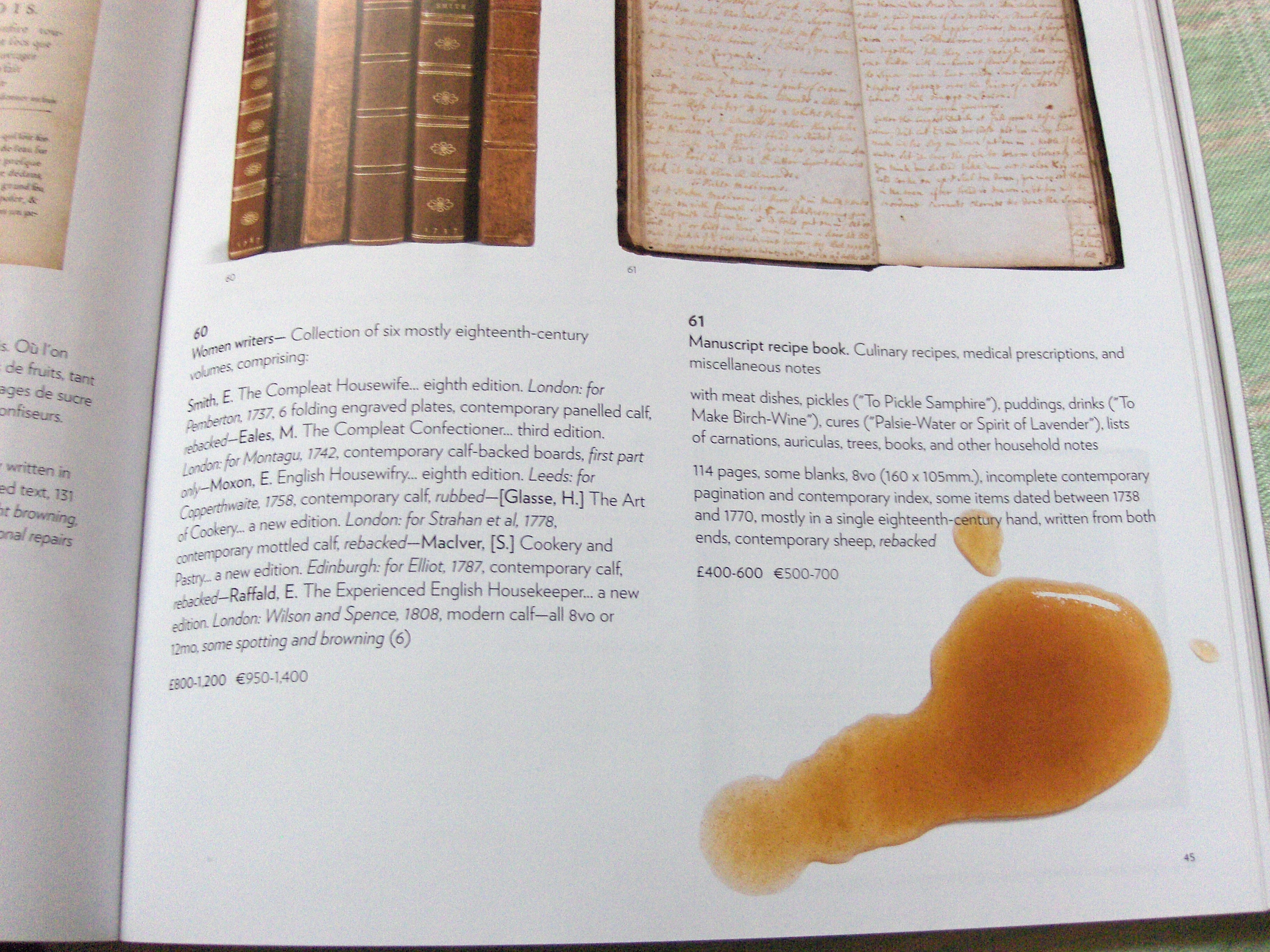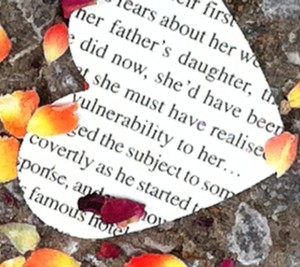I recently came across the above catalogue for a Sotheby’s auction held in July 2010 called ‘Books for Cooks: From the Collections of Stanley J. Steeger’. The sale featured over 150 items from the sixteenth century to the present day: all manner of manuscript and printed books related to food and cooking including early medicinal texts extolling the virtues of garlic and vinegar, a set of four continental volumes about olives and olive oil from the eighteenth century, nineteenth-century notebooks filled with recipes for puddings and jellies, and some first editions of Delia Smith.
Obviously it is in the interests of any auction house to make their lots appear as desirable as possible, and to this end this catalogue is a glossy book with luxurious paper, lots of photographs, and an elegant font. The description of each item is accompanied by a photograph, either of its title-page, an interesting illustration, or its binding. As well as these photographs, however, the pages of this sleek catalogue feature imposed images of food and drink stains and spillages: a scattering of lentils here, a glistening globule of marmalade and a smear of what looks like fresh pesto there, as well as the casual traces of a glass of red wine. So subtle are modern photography and printing techniques that these tasty spillages look as though they really could be licked off the page.
There’s a delicious irony embodied in this auction catalogue. ‘Fine’, ‘old’, and ‘rare’ books are considered more valuable the better condition they are in – a first edition of Delia Smith covered in dried ketchup smears would be of no interest to Sotheby’s. Yet books about food and cooking often appeal to our senses with lavish photos of the food in the recipes they contain. And in my house, recipe books are the only books I don’t mind accruing traces of various culinary ingredients – in fact, it’s usually inevitable that they will when I use them in the kitchen. It’s easy to find favourite recipes in my mum’s copy of the Cranks recipe book because it always falls open at certain flour-encrusted pages. While potential bidders are being wooed by Sotheby’s with these mouth-watering visual teasers, the items they may be tempted to buy will be also be delectable, but not quite so sticky…
 for the CMT’s forthcoming colloquium on the theme of ‘Eating Words’, see the ‘Events’ page
for the CMT’s forthcoming colloquium on the theme of ‘Eating Words’, see the ‘Events’ page



